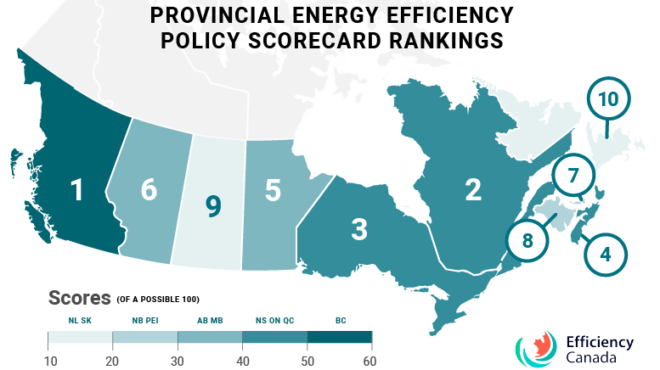
Energy efficiency scorecard helps set priorities
 As Efficiency Canada’s policy director, Brendan Haley (BSc’03) launched the provincial energy efficiency scorecard to benchmark policies across the provinces, highlight areas of leadership and identify priorities for federal attention. Dr. Haley has a PhD in Public Policy from Carleton University and was a Banting postdoctoral fellow at Dalhousie University.
As Efficiency Canada’s policy director, Brendan Haley (BSc’03) launched the provincial energy efficiency scorecard to benchmark policies across the provinces, highlight areas of leadership and identify priorities for federal attention. Dr. Haley has a PhD in Public Policy from Carleton University and was a Banting postdoctoral fellow at Dalhousie University.
—
Climate and energy policy news is filled with talk of regional tensions over pipelines and carbon taxes. These policy debates become regional ones because certain provinces are rich in particular resources, such as oil and hydroelectricity. While many energy production methods are regionally concentrated, energy waste is everywhere. That means there is an energy efficiency resource to be found in houses, businesses, and transportation systems throughout the country, and taking advantage of this resource is a goal that can unite our political leaders.
Energy efficiency is a must for any energy and climate change strategy. It creates jobs, improves affordability, and makes all industries more productive. If every province and territory were to implement comprehensive energy efficiency policies, those energy savings would add up to be a large national resource. The energy we save could meet 40 percent of our national energy needs by 2050, the International Energy Agency estimates. In other words, if we don’t focus on efficiency, we will need to produce more energy to move goods and people, operate factories, and heat and light our buildings. Needing to service an extra 40 percent of our energy needs could put our climate-change targets out of reach.
Find the full story, “Canadians can unite behind energy efficiency,” on policyoptions.irpp.org.